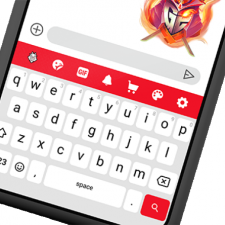2022 proved to be a tricky year for the mobile gaming industry, with developers worldwide struggling with decreased revenue and increasing user acquisition costs. Now, Tappa have presented their findings on how game makers can boost engagement.
Research conducted during the first quarter of 2023 aimed to understand game re-engagement, user habits, and notification usage and attitudes. The study involved a survey of 1185 mobile gamers between 18 and 60, 52% of whom played on iOS while 48% did so on Android. The respondents played a variety of genres. 59% of respondents were women, while 41% were men.
64.94% of survey respondents noted that they usually engaged in mobile gaming in “idle moments during the day,” making it the most popular time frame. This was followed by before sleep (45.22%), morning bathroom time (31.19%), morning coffee (29.50%), and while commuting. (24.34%). 9.64% of respondents schedule their gameplay around specific in-game activities, such as their cities being under attack or their resources being recharged.
When asked what brought them back to their games, 45.31% responded that it allowed them to collect daily rewards. A further 43.11% stated that mobile gaming filled idle moments, while 36.86% responded that it was automatic behaviour.
29.5% of respondents said that they had to play the game in order to continue progressing, while 20.29% said that they went back due to their resources being recharged.
Tappa’s research found that among the surveyed players, those with notifications enabled were more likely to play for more than an hour a day than those who disabled them. This trend was echoed among users who played mobile games more than three hours a day, while those who only play once or twice a day were more likely to have their notifications turned off.
The research found that certain motivations to open an online game were more common among those that had their notifications turned on. 49.06% of such respondents said it allowed them to collect their daily rewards, while 39.31% of respondents either played games to progress or as an automatic response.
Tappa notes that it’s clear that gamification has played a factor in getting players to turn on notifications, and this can be used even in genres with low notification percentages, such as word games. For example, Wordle could boost engagement by sending positive notifications to players when they perform well.
Notifications can also be used to boost revenue outside of advertising and in-game purchases. Tappa notes that, for example, Wordle could offer players who successfully solve the day’s puzzle in two or three attempts a discounted subscription to the New York Times, offering both perceived value to the user and a potentially lucrative influx of funds for The New York Times.
While Tappa found a significant relationship between engagement and notifications, it also found that 46.32% of gamers had their notifications disabled. The 18-29 age group was the most likely to turn on notifications, with 58.54% doing so, while only 46.67% of users between 45 and 60 did so.
The study found that 62.69% of users who opted out of notifications did so when first asked after downloading the game. As such, Tappa states that game developers need to first provide an incentive which drives the relevance and timeliness of notifications, and which directly contributes to the in-game experience. By doing so, players are more likely to agree to notifications, allowing for greater engagement and an increase in in-game revenue.
However, Tappa also stresses the importance of finding the right balance between optimising notifications and taking them too far. The report cites too many notifications as the main reason so many players reject notifications too soon after install, particularly with users over 45.
The key to success
Tappa also notes that a dedicated mobile keyboard can have a demonstrably positive effect on engagement. With phone users opening their mobile keyboards an average of 80 times every day, this offers new ways for games to engage with players without interrupting them with notifications.
Tappa cites one major (but unnamed) publisher with a dedicated mobile keyboard, and experienced a 48.52% increase in daily opens and a doubling of retention. Several game genres - such as adventure, simulation, and shooter - can benefit from the additional control made possible by the use of an in-game keyboard, offering players an enhanced gameplay experience.
“The research conducted points to a real opportunity during the mobile game installation process for explaining the value of notifications,” said Tappa CEO Leo Giel. “That said, a dedicated mobile keyboard provides all of the value of notifications for game developers without being intrusive. And in-keyboard branding opportunities enable marketing a game developer’s additional games or generating a new revenue stream by marketing other games.”
Positive notifications and in-game keyboards aren’t the only paths towards greater engagement. A PlanetPlay report in February found that in-game climate positive action can lead to a boost in both.






















